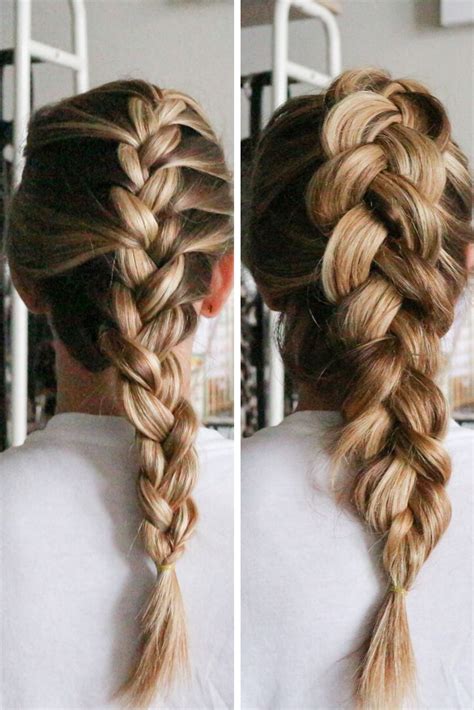Two of the most popular braiding techniques are the French braid and the Dutch braid. Both of these braids are beautiful and versatile, but they have slightly different looks and construction methods.

What is a French braid?
A French braid is a three-strand braid in which the strands are crossed over each other from the outside in. This creates a braid that is smooth and tight on the outside, with a more intricate pattern on the inside.
How to do a French braid
- Start with damp, brushed hair.
- Divide your hair into three equal sections.
- Cross the right section over the middle section, then the left section over the new middle section.
- Take a small section of hair from the right side of your head and add it to the right strand of the braid.
- Cross the right strand over the middle strand again.
- Take a small section of hair from the left side of your head and add it to the left strand of the braid.
- Cross the left strand over the middle strand again.
- Repeat steps 4-7 until you reach the nape of your neck.
- Secure the braid with a hair tie.
What is a Dutch braid?
A Dutch braid is also a three-strand braid, but the strands are crossed over each other from the inside out. This creates a braid that is more voluminous and textured on the outside, with a smoother pattern on the inside.
How to do a Dutch braid
- Start with damp, brushed hair.
- Divide your hair into three equal sections.
- Cross the left section under the middle section, then the right section under the new middle section.
- Take a small section of hair from the left side of your head and add it to the left strand of the braid.
- Cross the left strand under the middle strand again.
- Take a small section of hair from the right side of your head and add it to the right strand of the braid.
- Cross the right strand under the middle strand again.
- Repeat steps 4-7 until you reach the nape of your neck.
- Secure the braid with a hair tie.
The best braid for you depends on your personal preferences and the look you are trying to achieve. French braids are more traditional and elegant, while Dutch braids are more modern and edgy.
| Feature | French Braid | Dutch Braid |
|---|---|---|
| Appearance | Smooth and tight on the outside, with a more intricate pattern on the inside | More voluminous and textured on the outside, with a smoother pattern on the inside |
| Construction | Strands are crossed over each other from the outside in | Strands are crossed over each other from the inside out |
| Difficulty | Moderate | Moderate |
| Versatility | Can be worn in a variety of styles, including high, low, and side braids | Can be worn in a variety of styles, including high, low, and side braids |
French braids and Dutch braids are both beautiful and versatile braiding techniques. The best braid for you depends on your personal preferences and the look you are trying to achieve. With a little practice, you can master both of these braiding techniques and create a variety of beautiful hairstyles.
- Use a brush or comb to detangle your hair before braiding. This will help to create a smoother, more even braid.
- Braid your hair when it is slightly damp. This will help to keep the braid in place and prevent it from frizzing.
- Use a hairspray to hold your braid in place.
- Experiment with different braiding techniques to create a variety of different hairstyles.
